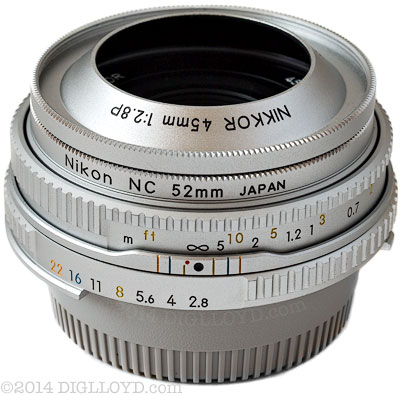The Effect of Focus Shift on Image Sharpness
Focus shift causing a loss of image sharpness with many lenses by shifting the zone of focus, typically rearward, but it can also be a differential shift (central areas vs peripheral).
The Nikon 45mm f/2.8P happens to have a pronounced focus shift (relatively rare in f/2.8 lenses)—its 4-element design is very simple and cannot correct very many aberrations, certainly not the one responsible for focus shift, spherical aberration. So it makes an excellent case study.
For this study, dual aperture series are used to show focus optimal wide open at f/2.8 and how it degrades with stopping down, as compared to focus optimal for f/5.6, and how f/2.8 is then inferior.
Regardless of brand, understanding focus shift and the compensation approach can be critical to getting peak sharpness, particularly with digital SLRs of increasing megapixels.
Focus shift is already a problem with ~22 or 36 megapixel cameras, but when we see a ~56 megapixel camera, dealing with focus shift will become a truly critical part of shot discipline.
This series has been cross posted in both MSI and DAP.
- Dual-Focus Focus Shift : Nikon 45mm f/2.8P (in Making Sharp Images)
- Dual-Focus Focus Shift : Nikon 45mm f/2.8P (in DAP)


























